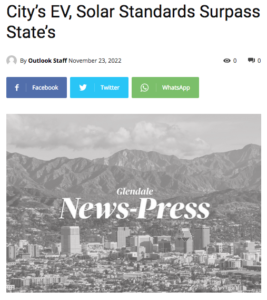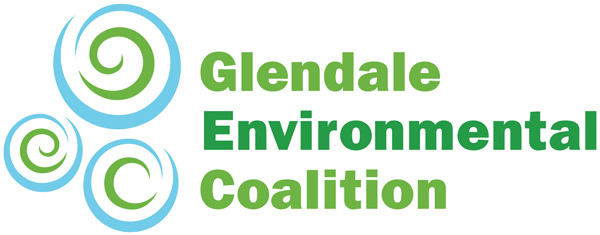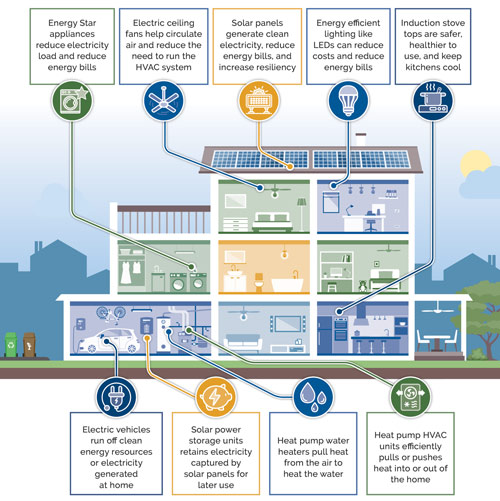Reach Codes for
Building Electrification, Solar, and EV Charging
November 19, 2022
Reach Codes Approved by Glendale City Council!
Pending approval by the California Energy Commission and the Building Standards Commission, Glendale is set to be the largest city in Southern California to adopt a reach code for building electrification! If approved, codes will go into effect January 1, 2023.
Glendale City Council has adopted ordinances to:
- Require all new construction, including accessory dwelling units (ADUs), to be completely electric, with limited exemptions. Buildings that receive a waiver must be pre-wired for future electric appliance installation.
- Requires new single and multi-family units and non-residential construction to include electric vehicle infrastructure.
- Requires new construction to install solar pv. New buildings must offset 100% of their projected electricity use or cover at least 50% of rooftop space.

Read about the outcome in the Glendale News Press:
https://glendalenewspress.outlooknewspapers.com/2022/11/23/citys-ev-solar-standards-surpass-states/
Reach Code Workshop Recording
VISIT Glendale’s Reach Code Webpage
Learn more about the reach codes and their many benefits (including cost savings and reduction of local emissions), view updates, learn about upcoming events, and view recordings of webinars at the City’s webpage.
For questions, email Sustainability@glendaleca.gov.
TAKE the Survey
After you read the fact sheet, please fill out the city’s Reach Code Survey.
REACH CODES FACT SHEET
September 8, 2022
Prepared by the Glendale Building Electrification Working Group
(The Glendale Environmental Coalition is a proud member of the Glendale Building Electrification Working Group, which formed this year to promote an all-electric building policy for the city, to go into effect as soon as possible and with the fewest exceptions possible.)
Background
Glendale is considering adopting “reach codes” to make new buildings all-electric, to include solar on new non-residential and multifamily buildings, and to include some EV chargers and EV-ready parking spaces for new buildings. The new requirements would go into effect on January 1, 2023.
The Glendale Building Electrification Working Group supports this proposal, while offering some suggestions to strengthen the policies. These reach codes will help reduce local air pollution and confront the climate crisis, improve public health, and save new building occupants money on their utility bills.

